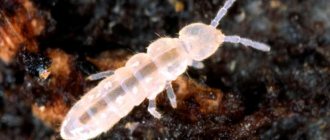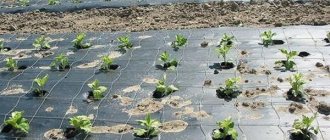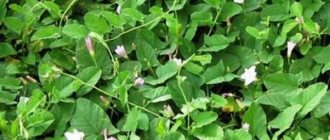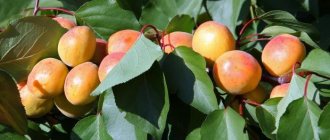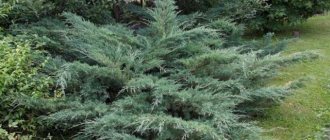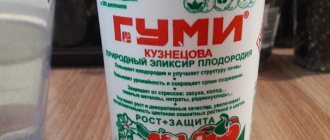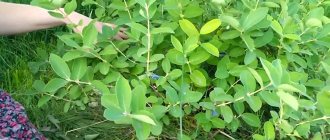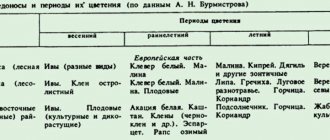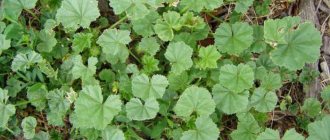Pigweed (or Bermuda grass) has recently spread to the Southern regions; it can be found in temperate climates on the sandstones of mountainous and lowland areas. A drought-resistant weed with a branched root system quickly displaces nearby grasses and inhibits the growth of cultivated plants, completely depleting the soil. A photo of the pigweed weed and its biological characteristics will help to promptly detect its appearance on the site and prevent further spread.
Features of pigs
Propagated by seeds and roots. Approximately 2 thousand seeds are formed on one pig plant. But after the seeds fall off, they rarely germinate, so the plant mainly reproduces through the roots. The culture is used in folk medicine. Leaves and roots have laxative, diuretic, diaphoretic, choleretic, restorative, and tonic effects. Herbal lotions are applied to wounds and cuts, as the leaves have a disinfectant effect that heals wounds. Used for urolithiasis.
Attention! Pigweed, the photo shows that its rhizomes are powerful and thick, large scales and hard and sharp ends are visible at the nodes. The roots are located horizontally or with a slope towards the surface of the earth.
Ascending shoots appear upward from the nodes, then the shoots grow above the surface of the earth, turn green, and the scales transform into green foliage, and they spread like lashes over the surface. Then the ends of the lashes again descend underground and grow like roots. Because of this, the culture was called pigweed. The plant has roots both underground and above the soil. Plants do not care about the composition of the soil. The crop spreads across virgin lands due to its creeping rhizomes. If the soil is well loosened, then plants reproduce by roots located underground.
Attention! If the ground is dug up, then the roots of the plant are at a depth of 22 cm, and in virgin soil - at 18 cm.
Pigweed palmata, the photo shows that the stems begin to branch at the base. They are up to 30-50 cm in height. The leaves are lancet-shaped, sharp. They are very hard and rough and may have hairs on them. The color of the foliage is green, turning into grayish or blue.
Pigweed flowers form inflorescences in the form of spikelets at the top of the crop. The length of the branches can be from 6 to 7 cm. 6-7 branches are combined into one inflorescence. The spikelet of the plant is oblong with scales. When the seeds ripen, the scales acquire a yellowish straw color, but can also remain greenish and violet.
How it is used in medicine
The second name for pigweed is “fingerweed”, due to the special structure of the leaves, which resemble fingers in shape. Officially, this plant was not included in the pharmacological reference books of medicinal herbs, however, its healing properties have been known for a long time. The plant is especially respected in folk medicine in Germany and France. It is used for the following ailments:
- disorder of the excretory system, since the plant is an excellent diuretic, helps relieve inflammation, stops the formation of sand and kidney stones;
- diseases of the genital organs, in which the pig fights inflammation of the bladder and prostate;
- kidney diseases, in which pigweed helps relieve the symptoms of pyelonephritis, relieves spasms, and has a cleansing effect;
- in the presence of papillomas, in which pigweed, thanks to its cleansing properties, helps cleanse the body of waste and toxins, stopping the formation of papillomas on the skin.
For treatment, decoctions and infusions of pigweed are used. It is better to prepare raw materials for medicinal purposes in early summer
Measures to control pigs in vegetable gardens
How to get rid of pigweed in the garden? Pig control measures include mechanical methods:
- digging the ground with a pitchfork;
- root removal;
- mulching;
- planting pumpkins.
You can also use chemical measures - treatment with kerosene and herbicides.
Pulling weeds, loosening the soil
It is very difficult to get rid of pigweed, as it begins to multiply quickly from rhizomes, and it is also difficult to dig up the ground due to the growing roots. Pigweed, how to get rid of it? It is necessary to pull out weeds with rhizomes and loosen the soil.
This should be done often, but the torn plants should be thrown away, or better yet, burned. Because otherwise they will grow in a week. The roots must be removed entirely. The first time they weed is early in the spring, when the roots are still small, and they also dig up the ground. Then they weed and dig up in the summer. The main thing is to select all the roots from the ground.
Digging with a pitchfork
If you dig up the soil with a shovel, you will cut the rhizomes into pieces and it will be difficult to completely remove them. If part of the root remains in the soil, it will germinate. If you dig with a pitchfork, the soil will become loose, and the weed with rhizomes will be easier to collect.
Mulching
How else to eliminate pigweed in the garden? If plants are constantly without light, they will not survive. Therefore, the beds are covered with dark film, cardboard, and roofing felt. First, in the fall, they weed the area, then cover it with dark agrofibre. Afterwards, bricks are laid so that the agrofibre holds in place.
Spraying with kerosene
If you treat the grass with kerosene, it will dry out and die, but the kerosene will erode and will not damage the vegetable crops.
Planting a pumpkin
You can destroy the pigweed by sowing pumpkin seeds; when they sprout, the plants will grow large leaves that will shade the pigweed and it will die.
Procurement of raw materials
The above-ground part of the plant is harvested during flowering. Cut off the stems, leaves, flowers, and lay them out to dry in the shade. The roots are dug up in late autumn, thoroughly cleaned of soil, cut into 15 cm pieces and dried also outdoors in the shade or indoors with free access to fresh air. You can use a dryer with a temperature of no more than 50ºС. Raw materials are packaged in paper containers. Roots last for 3 years, grass for up to 2 years.
As you can see, even a malicious weed can bring real benefits to the human body, if only it is used correctly. You will probably be interested in learning about the benefits of other plants - about the medicinal properties of senna leaves, about the medicinal qualities of ordinary beets, about effective methods of treatment with the sagan dail plant.
Write to us how your body reacted to pigweed-based drugs? What diseases have you treated with this herb?
Syn: palmate grass, cynodon, bermuda grass, dog grass, sable tooth, palmate grass, paw grass, bark grass.
Pigweed is a herbaceous perennial plant with a long rhizome, branched stems and narrow leaves. The plant is a weed, but has diuretic, laxative and other beneficial properties. Pigweed is used in folk medicine mainly for diseases of the excretory system, rheumatism and other diseases.
In medicine
Pigweed is a non-pharmacopoeial plant and is not used in official medicine. The grass and rhizomes of pigweed have laxative, diuretic, diaphoretic, choleretic, restorative, tonic, disinfectant and wound-healing properties. The plant is known in folk medicine. It is used mainly for the treatment of rheumatism, urolithiasis, and diseases of the excretory system. Externally, pigweed is used for skin lesions, wounds, and cuts.
Contraindications and side effects
During flowering, pigweed pollen is an allergen. An allergic disease (hay fever) is accompanied by acute inflammation of the mucous membranes of the eyes, respiratory tract and skin. Contraindications to the use of pigweed are individual intolerance, a tendency to exhibit allergy symptoms, pregnancy and lactation.
In landscape design
Pigweed is not only a nasty weed in gardens. It can rightfully be considered an ideal perennial for turfing airfields and sports fields, as well as strengthening slopes, thanks to its long rhizomes. This grass is also used in the design of lawns.
On the farm
Pigweed is considered a malicious, difficult-to-eradicate weed, the rhizomes of which form entire clumps. However, it is also a valuable forage plant that sheep are very fond of. Pigweed is grown in desert and semi-desert areas where there is a shortage of feed.
Weed control
This weed is a malicious enemy of cultivated plants. Its old roots, even in the absence of moisture, disappear only after a month. Small areas and beds can be cleared of weeds with a shovel, as well as by carefully selecting rhizomes from the soil. The following year, the site is maintained in a loose state. Various chemical means of protection are considered effective for combating palmate hogweed.
Pigwort palmate or palmate (lat. Cynodon dactylon, Panicum dactylon, Capriola dactylon) is a herbaceous perennial plant, a species of the genus Pigwort (lat. Cynodon). Belongs to the Poaceae or Poaceae family.
Pigweed palmate is a herbaceous perennial 15-50 cm high. The rhizomes of the plant are thick, long and fragile. The bulk of the roots are located at a depth of approximately 10-20 cm; the rhizomes often form dense clumps. The recumbent ascending stems are branched and have narrow linear-lanceolate hairy leaves. As they grow older, soft leaf blades become harder and coarser. Pigweed grass blooms from June to September, forming inflorescences of 3-8 spike-shaped branches. These branches are collected at the tops of the stems. On one side of the spike-shaped branches there are small, single-flowered spikelets located in two rows.
Pigweed is a nasty weed. One such plant can produce about 10 thousand seeds. Seed germination lasts for 10 years! In temperate climates, the rhizomes of the palmate plant freeze out in winter, so propagation of the plant is mainly by seed.
The homeland of the pig is considered to be southern Europe, Asia, northern Africa and Australia. The plant is widespread in the Balkans, Northwestern China, Central Europe, Asia Minor, Mongolia, the Mediterranean, Armenia, and Afghanistan. This perennial under natural conditions is found in Central Asia, Crimea, the Black Sea and Middle Dnieper regions of Ukraine, the Verkhnetobolsky and Irtysh regions of Western Siberia, the Lower Volga, Lower Don, and Black Sea regions of the European part of Russia.
Pigweed grows in the mountains and on plains and sandy places. It is not picky about soil, the weed tolerates long-term drought well, and is also resistant to salinity. Therefore, it is not surprising that the species was able to quickly dominate fields and vegetable gardens, quickly reproducing with numerous seeds, suppressing other weeds and crops.
Regions of distribution on the map of Russia.
For medicinal purposes, it is recommended to use almost the entire plant, its above-ground and underground parts. The roots of pigweed are collected in late autumn after the growing season of the plant. They are cleared of soil, washed and dried in the open air or in the attic. Dried raw materials are stored for no more than 3 years.
The ground part of the pigweed (stems, leaves and flowers) is harvested during the flowering period. Pigweed grass is dried in the shade. Store in a dry place for no more than 2 years, packed in paper packaging.
The rhizomes of palmatee contain carbohydrates (sucrose, fructans), organic acids, their derivatives (malic acid salts), carotenoids (neoxanthin, p-carotene, pheophytin A and B, violaxanthin, lutein, zeaxanthin, lutein ester), fatty oil, vitamin IN.
Pharmacological properties
Scientific research on this medicinal plant is quite scarce. The chemical composition of pigweed palmate has not been fully studied. Traditional medicine recommends the use of pigweed as a laxative and diuretic. The laxative effect is due to the large amount of mucous substances and saponins in the plant; the diuretic effect is observed due to the vasodilating effect of the plant on the vessels of the kidneys.
Use in folk medicine
In folk medicine of different countries, hogweed has earned popularity and respect due to its beneficial properties. Since the plant is endowed with laxative and diuretic properties, decoctions of its roots and aerial parts are used for diseases of the genitourinary organs in different parts of the world. Traditional medicine in France and Germany uses pigweed in a similar way to creeping wheatgrass. In Bulgaria, the rhizomes of this plant are included in herbal diuretic preparations; they are used for papillomatosis of the bladder, kidney stones, glomerulonephritis, prostate hypertrophy and impotence. In combination with other plants, pigwort in the form of a decoction or infusion is used for prostate adenoma in men.
In China, pigweed is a medicinal product with a wide range of uses. It is recommended to be taken orally for dysentery, nosebleeds, rheumatism, upper respiratory tract infections, liver inflammation, swelling of the lower extremities, bloody vomiting, urinary tract infections, urticaria, paralysis of the arms and legs.
A slurry of freshly crushed herb is used to treat small cuts, ulcers, carbuncles, and wounds, applied externally to skin lesions in the form of compresses and lotions. A decoction of pigweed rhizomes can be used as lotions for various eye diseases.
The palmate plant has several synonymous names: “finger grass”, “finger grass” (due to the shape of the spike-shaped branches of the inflorescence), “Bermuda grass” - the name is due to the fact that the herbaceous plant palmate grass was once brought to Bermuda, there it spread.
1. Gubanov I. A. et al. 130. Cynodon dactylon (L.) Pers. — Pigweed palmate // Illustrated guide to plants of Central Russia. In 3 volumes - M.: Scientific T. ed. KMK, Institute of Technology. research, 2002. - T. 1. Ferns, horsetails, club mosses, gymnosperms, angiosperms (monocots). — P. 224.
2. Lavrenov V.K. Encyclopedia of medicinal plants of traditional medicine. - Publisher: OLMA Media Group, 2003. - 270 p.
3. Plamen Kyosev. Medicinal plants: the most complete reference book. — Publisher: Litres, 2021.
see also
You watched
Return to list
Pigweed is a perennial, one of the malicious weeds familiar to almost all gardeners. It grows in Crimea, the Caucasus, the south of the Volga region, and Asia. In nature, the culture can be seen on the Balkan Peninsula, in northwestern China, in Mongolia, in the center of Europe, in Armenia and Afghanistan. The plant likes to grow in the mountains, but also on the plains, it likes sandstones. Prefers heat and drought. The crop blooms in June and blooms almost until frost. What to do if a pigworm appears in the garden?
Herbicide use
How to get rid of pigweed using herbicides? The grass is very difficult to destroy, since it reproduces by pieces of roots that appear when the weeds are pierced with a hoe or when digging the ground. Rathenias still feel good in drought, since their rhizomes can be located at a depth of about 1.5 m. To destroy the crop, it is treated with Tornado. Next you can see what a Tornado looks like, which destroys grass with a pig, the photo shows that this product destroys all types of weeds.
This is a full action product. After using the composition, all types of crops die. The drugs Roundup, Glysol, and Hurricane have the same effect.
When the smallest amount of the drug gets on the leaves, it penetrates the rhizomes and destroys them. After 7 days, the weed leaves turn yellow, and after 21 days the plant dies. The drug is used in the fall after harvesting. Tornado is used after watering or rains, since in their absence dust flies onto the leaves and this complicates the effect of the herbicide. If the soil is too dry, the crops are not cultivated. Also, do not spray the plants if, according to the forecast, it will rain in 3-4 hours. Digging the soil and fertilizing it should be done only a week after using Tornado. It is required that the drug does not come into contact with vegetable crops under any circumstances. Tornado can affect pigweed and other plants, and also remains in the soil for 60 days after application. Consumption rate 6-8 l/ha. To do this, dilute 100 g of Tornado in 6 liters of water.
If you sow rapeseed, beets, white cabbage, other vegetables, flax, you can use Shogun herbicide against the weed. Apply 1-1.2 l/ha of the drug against pigs. Shogun is used throughout the growing season of vegetables and crops. The weed is sprayed with herbicide before its stems grow to a height of 15 cm. It is recommended to use it only once per season.
Advice from experienced gardeners
In the fight against weeds, if the infestation is not widespread, you can use the advice of experienced gardeners:
- Make a strong solution of caustic soda and water it at the root in the spring.
- Sprinkle with pork salt - 1 kg per bush.
- Citric acid will stop the growth, with a solution of 3 tbsp. l. For 1 liter of water, the above-ground part is treated.
You can destroy weeds for one season with ethyl alcohol diluted in water (1/10). The product is treated with the stems and leaves and watered at the root. But this is a one-time measure; next year the grass will appear again.
Measures to combat pigs in the fields
- If it is clear that the fields are not very overgrown with pigweed, then cotton is planted on them. If the grass has grown greatly, then you can destroy it by digging up the ground and not planting anything for a year.
- In June and until August 10, the soil is plowed. Layers of earth are placed on edge so that the weed roots dry out, then they are combed out. Or, after harvesting grain crops, hulling is carried out with body plows to a depth of 15 cm, and then after 28 days the soil is plowed to a depth of 22 cm, making sure to comb out the roots.
- In spring, the roots are combed out with spring cultivators and harrows. Then in May the soil is plowed and the roots are combed out again. And from June to August, the soil is plowed 4 times to a depth of 10 cm using hull implements with sharply sharpened plowshares, after which the roots are immediately combed out with heavy harrows.

